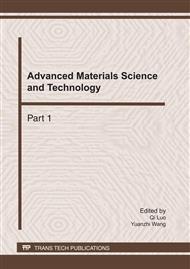p.691
p.697
p.702
p.707
p.712
p.717
p.720
p.726
p.731
Waveband Selection of NIR Spectroscopy Analysis for Glucose Aqueous Solution Based on Savitzky-Golay Smoothing
Abstract:
The high accurate partial least squares (PLS) models of near-infrared (NIR) spectroscopy analysis for glucose aqueous solution were established by large-scale simultaneous optimization of Savitzky-Golay (SG) smoothing mode and PLS factor. A total of 6 wavebands were used for modelling respectively. The model prediction effect with SG smoothing was obviously better than ones without SG smoothing for each waveband, it indicated that the large-scale simultaneous optimization of SG smoothing mode and PLS factor could obviously improve model prediction effect. The optimal waveband was the combination of 400-1880 and 2082-2350 nm, the optimal SG smoothing mode was 1st order derivative smoothing, 2nd degree polynomial, 63 smoothing points, and the corresponding PLS factor, RMSEP and RP were 14, 0.289 mmol/L and 0.9996 respectively. The combination of 1100-1880 and 2082-2350 nm was also a waveband with high signal to noise ratio for glucose, could replace the whole spectral collecting region and get very good prediction effect, which could provide valuable references for designing spectrophotometer system in special NIR spectrometer. To get the stable prediction results, all models and results were obtained based on the average data on 30 different divisions of calibration set and prediction set.
Info:
Periodical:
Pages:
712-716
Citation:
Online since:
January 2011
Authors:
Price:
Сopyright:
© 2011 Trans Tech Publications Ltd. All Rights Reserved
Share:
Citation:


